Table of Contents
The advent of AI voice generators has revolutionized the field of speech synthesis technology, enabling the creation of remarkably human-like speech from written text.
These sophisticated systems leverage artificial intelligence to produce natural intonation, emotional expression, and realistic vocal characteristics, bridging the gap between digital and human communication.
Unlike traditional text-to-speech systems, modern voice generators have evolved to support multiple languages, accents, and voice styles, making them invaluable for global applications across industries.
The technology is transforming content creation, marketing, education, entertainment, and business communication with its increasingly realistic vocal output, revolutionizing how we interact with audio content.
The Evolution of AI Voice Technology
From its humble beginnings, AI voice technology has grown exponentially, transforming the way we interact with machines. Early systems were far from perfect, producing robotic voices that lacked the natural cadence of human speech.
From Robotic to Human-Like Speech
The journey began with basic mechanical systems that produced rudimentary sounds, evolving through electronic speech synthesizers. These early digital text-to-speech systems of the 1980s and 1990s used concatenative synthesis, creating speech that sounded noticeably robotic and lacked natural flow. The introduction of statistical parametric speech synthesis in the early 2000s somewhat improved voice quality, but the voices remained distinctly artificial.
Breakthrough Advancements in Neural Voice Synthesis
The true revolution came with neural network-based approaches around 2016. Deep learning models began analyzing vast datasets of human speech to understand and replicate the subtle patterns that make speech sound natural. Recent breakthroughs in neural voice synthesis have dramatically reduced the gap between synthetic and human voices, with technologies like WaveNet, Tacotron, and transformer-based models creating speech with natural prosody, accurate pronunciation, and emotional expressiveness.
| Technology | Year Introduced | Key Features |
|---|---|---|
| Concatenative Synthesis | 1980s | Piecing together pre-recorded sound fragments |
| Statistical Parametric Speech Synthesis | Early 2000s | Improved voice quality, still artificial |
| Neural Voice Synthesis | 2016 | Natural prosody, accurate pronunciation, emotional expressiveness |
How AI Voice Generators Work
The technology behind AI voice generators is sophisticated, relying on a combination of linguistic analysis and machine learning algorithms to produce high-quality synthetic voices.
Text Processing and Analysis
The first step in AI voice generation is text processing and analysis, where the AI system interprets written content to understand its structure, meaning, and intended delivery. This involves identifying sentence boundaries, punctuation, numbers, abbreviations, and special characters, converting them into a standardized format.
Phonetic Synthesis
The next stage is phonetic synthesis, where the processed text is converted into phonemes, determining how each word should be pronounced based on linguistic rules and context. This stage is crucial in generating accurate and natural-sounding speech.
Voice Modeling and Neural Networks
Voice modeling is where advanced neural networks synthesize the phonetic data into speech, generating a waveform that includes voice modulations. These neural networks learn to generate subtle variations in pitch, rhythm, stress patterns, and articulation, making speech sound natural rather than mechanical.
| Stage | Description | Key Features |
|---|---|---|
| Text Processing | Analyzing written content | Sentence boundary detection, punctuation handling |
| Phonetic Synthesis | Converting text to phonemes | Linguistic rule application, context analysis |
| Voice Modeling | Synthesizing phonetic data into speech | Neural network-based, voice modulation generation |
Key Features of Modern AI Voice Generator Technology
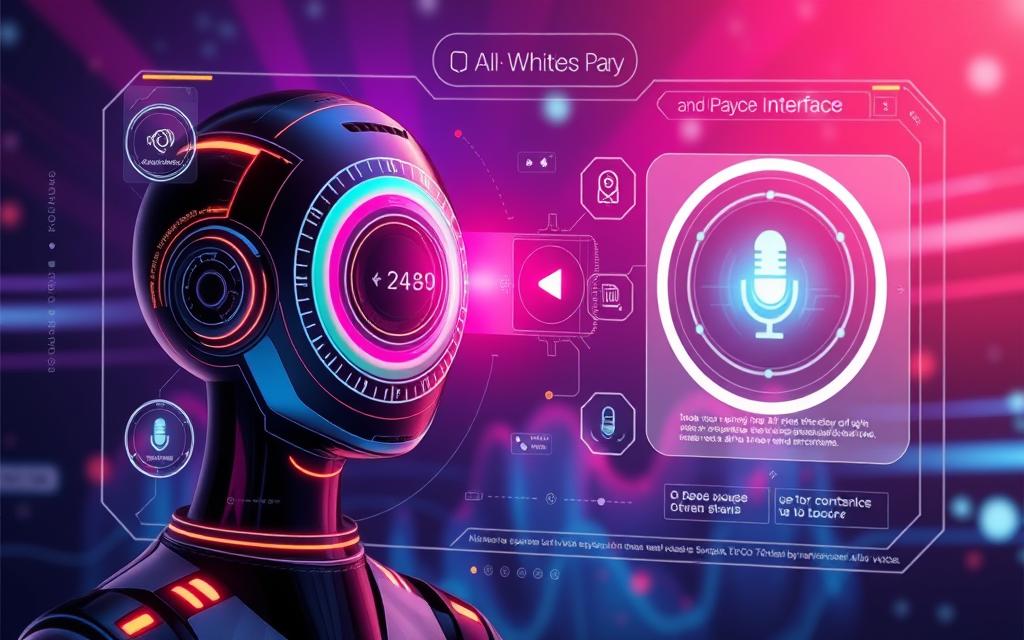
Modern AI voice generators have revolutionized the way we interact with technology, offering unprecedented levels of realism and customization. These advanced systems have transformed the landscape of digital communication.
Natural Intonation and Emotional Expression
Today’s AI voice generators have overcome the “uncanny valley” of speech synthesis by mastering natural intonation patterns, creating speech that flows with human-like rhythm. Emotional expression capabilities allow these systems to convey a range of feelings, making the audio content more engaging and contextually appropriate.
Multilingual Capabilities
Advanced multilingual support enables a single AI system to generate authentic-sounding speech across dozens of languages, complete with proper accent, pronunciation, and language-specific speech patterns. This feature is particularly valuable for global businesses and content creators.
Customization Options
Customization features give users control over voice characteristics, allowing adjustments to pitch, speed, emphasis, pauses, and specific word pronunciations. This enables content creators to craft voices that align perfectly with their brand identity or project requirements.
Voice Cloning: Creating Digital Voice Twins
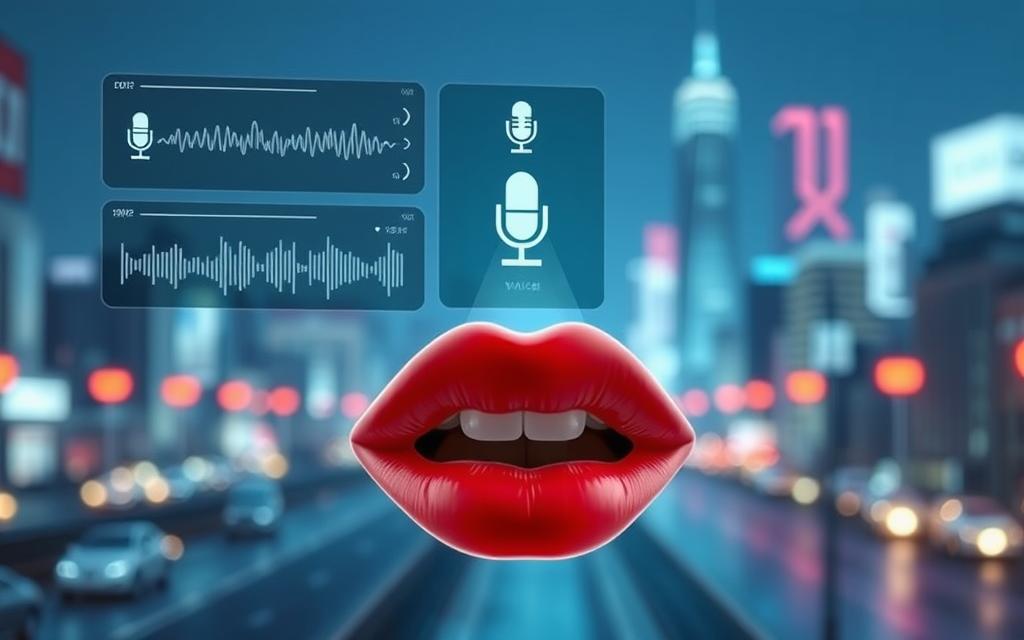
Voice cloning represents a groundbreaking capability in modern AI voice technology, allowing for the creation of digital voice twins that can speak any text in a specific person’s voice with remarkable accuracy. This technology has the potential to revolutionize various industries, from entertainment to customer service.
How Voice Cloning Works
The process of voice cloning begins with collecting audio samples from the target speaker, typically ranging from 5 to 30 minutes of clear speech. Advanced neural networks then analyze these samples to extract hundreds of parameters, including pitch range, timbre, and vocal mannerisms, creating a comprehensive voice profile.
Ethical Considerations and Safeguards
While voice cloning offers exciting possibilities for content creation, it also raises significant ethical concerns regarding consent and potential misuse for impersonation. To address these issues, it’s crucial to develop verification systems that can identify AI-generated speech and protect individuals’ vocal identity rights, ensuring the quality of the generated voices.
The creation of digital voice twins through voice cloning technology has sparked important discussions about the need for safeguards and regulations to prevent misuse, while also exploring the vast potential of this technology in various applications.
Top AI Voice Generator Platforms
The most advanced AI voice generator platforms are setting new benchmarks in voice synthesis and customization, offering a range of features that cater to different needs and applications.
ElevenLabs
ElevenLabs has established itself as a leader in the AI voice generation space, offering some of the most natural-sounding voices with support for 29+ languages and advanced features like voice cloning and emotion control.

PlayAI
PlayAI distinguishes itself with an extensive library of 206 AI voices spanning 30+ languages, along with innovative features like multi-voice conversations and speech styles that add emotional variation to the generated audio.

Murf AI
Murf AI targets professional use cases with 200+ voices and 15+ speaking styles, offering enterprise-grade features like team collaboration tools and seamless integration with popular software, making it ideal for creating high-quality text-to-speech outputs.

Transforming Content Creation with AI Voices
Content creators are now leveraging AI voice generators to streamline their workflows. AI voice technology is revolutionizing content creation by eliminating traditional bottlenecks such as scheduling recording sessions, managing retakes, and extensive audio editing.
Streamlining Production Workflows
With AI voice generators, production workflows become more efficient. The technology allows for the generation of professional-quality voiceovers in minutes, rather than days or weeks. This enables creators to produce more content and respond quickly to time-sensitive opportunities.
- Eliminates the need for recording studios and voice actors.
- Reduces the time spent on editing and retakes.
- Enables quick generation of voiceovers for various content types.
Cost and Time Efficiency Benefits
The cost efficiency of AI voice generators is remarkable, operating on subscription models that provide unlimited or high-volume voice generation at a fraction of the cost of professional voice actors. This results in significant time and cost savings, allowing creators to allocate resources more effectively.
- Reduces costs associated with hiring professional voice actors.
- Saves time by generating voiceovers quickly.
- Enables the production of more videos and content.
AI Voice Applications in Marketing and Advertising
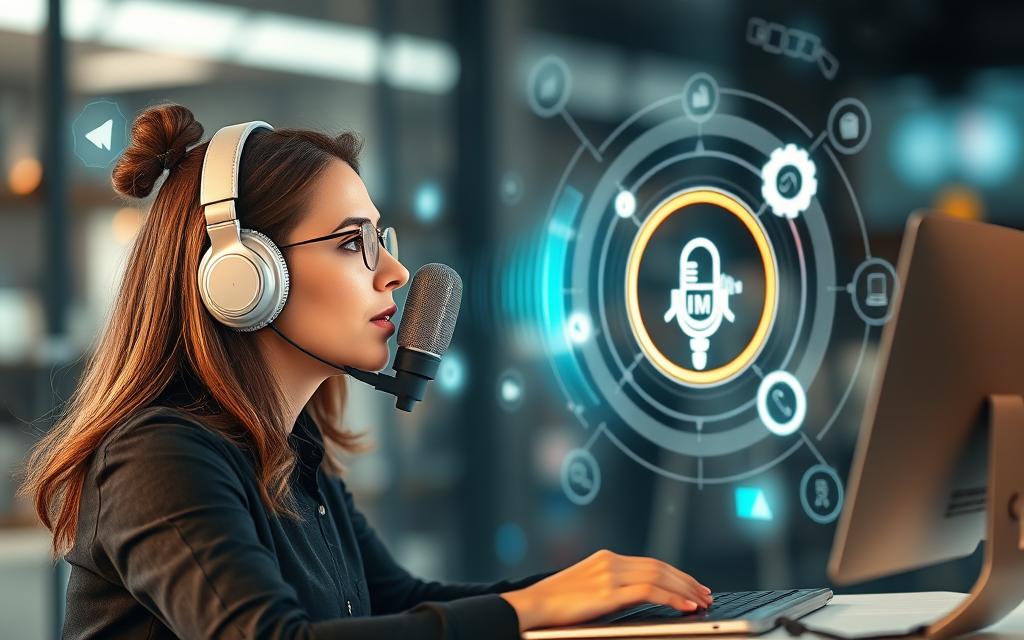
The integration of AI voice generators is revolutionizing marketing strategies by providing brands with a consistent voice across various channels. This technology is particularly beneficial for maintaining a uniform brand identity in explainer videos, product demonstrations, and advertisements.
Brand Voice Consistency Across Channels
Marketing departments are increasingly adopting AI voice technology to ensure brand voice consistency across all customer touchpoints. This consistency strengthens brand identity and recognition, as audiences encounter the same distinctive voice regardless of where they interact with the brand’s content, from videos to IVR systems.
Localization and Global Reach
For global marketing campaigns, AI voice generators enable efficient localization, allowing brands to translate and voice content in multiple languages while maintaining the original message’s intent, tone, and impact. The technology supports accent customization, ensuring that content sounds authentic to local audiences, significantly improving engagement and credibility in international markets. By leveraging AI voice generators, marketers can quickly create different versions of campaigns with varied tones or pacing using voice variability features, and test different voiceovers for their campaigns.
To explore how AI voice generators can enhance your marketing strategy, visit Lovo AI’s advertising use case for more information.
E-Learning and Educational Content
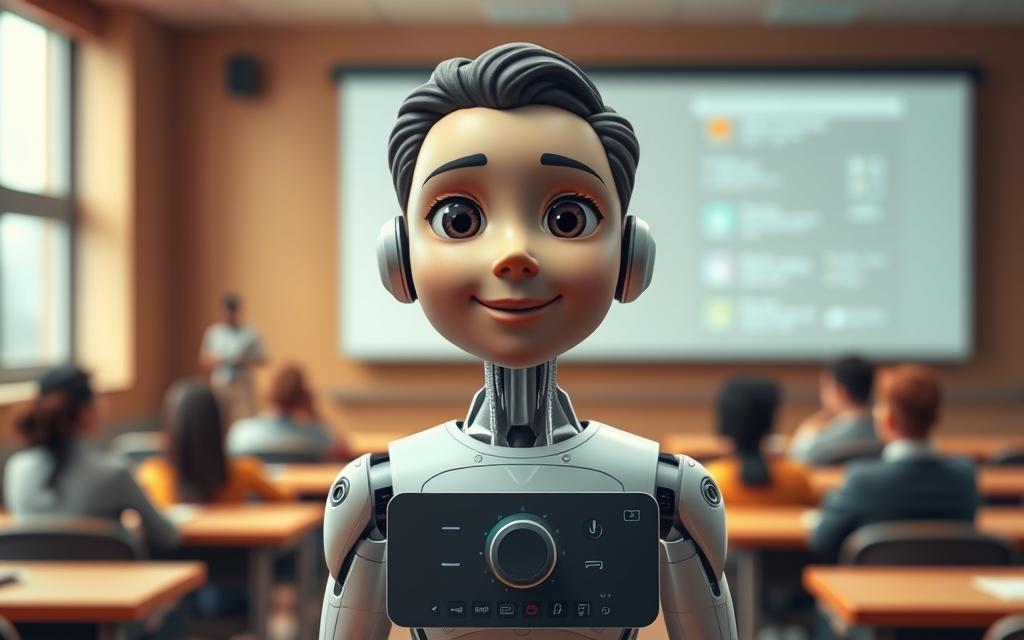
AI-powered voice generators are making educational content more engaging and accessible for diverse learners. The technology simplifies the conversion of text-based educational content into audio format, making it accessible to a global audience.
Creating Engaging Learning Materials
Educational institutions and corporate training departments are leveraging AI voice technology to transform text-based learning materials into engaging audio content. This appeals to auditory learners and enhances information retention. The technology enables instructors to create consistent, high-quality narration for e-learning modules and educational videos.
Accessibility Benefits for Diverse Learners
AI voices make educational content available to learners with visual impairments, reading difficulties like dyslexia, or those who prefer auditory learning. The multilingual capabilities of modern AI voice generators allow educational content to be quickly localized for international students or global training programs.
By utilizing AI voice generators, educational content creators can enhance the learning experience, improve accessibility, and maintain student engagement across various curricula.
Entertainment and Media Applications
AI-generated voices are revolutionizing content creation in entertainment and media. The technology is being increasingly adopted across various sectors, including audiobooks, podcasts, gaming, and animation, to produce high-quality voiceovers.
Audiobooks and Podcasts
AI voice generators are being used to create engaging narrations for audiobooks, allowing publishers to convert written works into audio format more efficiently. Podcast creators are also leveraging AI voices to produce content more consistently and frequently, with some even creating multi-voice conversational podcasts.
The use of AI voice technology in audiobooks and podcasts enables the creation of diverse, high-quality content that captivates listeners. This technology is particularly beneficial for producers looking to maintain a consistent output without compromising on voice quality.
Gaming and Animation Voiceovers
In the gaming and animation industries, AI-generated voiceovers are used for prototyping and pre-visualization, allowing developers to test dialogue and character voices before committing to expensive voice actor recording sessions. This not only streamlines the production process but also enables independent game developers to include fully voiced characters in their games.
The technology also facilitates rapid localization of entertainment content for global markets, enabling games, animations, and other media to be voiced in multiple languages without requiring the original voice actors to record new versions.
Business Communication and Customer Service
Businesses are leveraging AI voice technology to enhance their customer service and communication strategies. AI voice generators are transforming the way companies interact with their customers and deliver information internally.
IVR Systems and Virtual Assistants
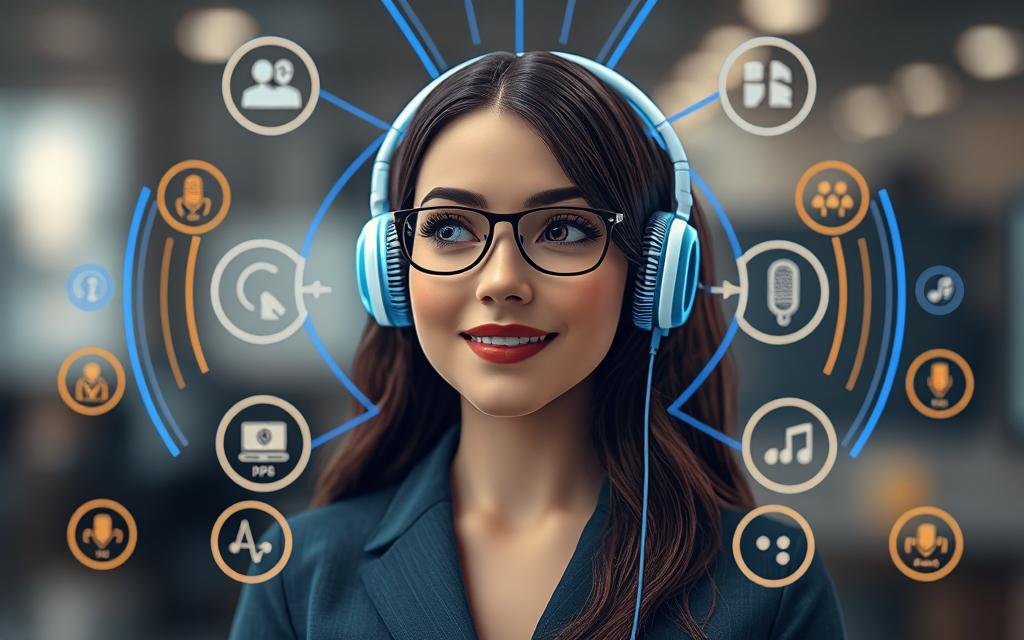
AI voice technology is revolutionizing customer service operations by creating more natural-sounding and responsive Interactive Voice Response (IVR) systems that improve caller experience and reduce frustration. Virtual assistants powered by AI voices provide consistent, round-the-clock customer support across multiple channels.
Corporate Training and Internal Communications
For corporate training, AI-generated voiceovers enable companies to produce and update instructional content quickly, ensuring that all employees receive consistent information. Internal communications also benefit from AI voices, with companies creating audio versions of important announcements and updates.
Technical Integration and Implementation
Modern AI voice platforms are designed with integration in mind, providing robust APIs and developer tools. This enables businesses and developers to incorporate AI voice generation capabilities directly into their applications and workflows.
API Access and Developer Tools
Leading AI voice platforms offer API access and developer tools for seamless integration into various applications and workflows. They provide SDKs for programming languages like Python and TypeScript, making it easy to incorporate voice generation capabilities into existing software systems.
- Software developers can leverage SDKs to build custom applications that incorporate AI voice functionality.
- These technical integrations enable automated workflows where text content can be automatically converted to speech without manual intervention.
Seamless Integration with Existing Systems
Many platforms offer seamless integration with popular software like PowerPoint, Canva, Adobe Captivate, and Adobe Audition, allowing users to add AI-generated voiceovers directly within the tools they already use for content creation.
- For enterprise implementations, these systems can be integrated with content management systems and learning management systems to automate the generation of voiced content.
- This integration streamlines production processes for organizations that regularly produce voiced content, enhancing efficiency and reducing costs.
The Future of AI Voice Technology
Advancements in AI voice technology are happening at a rapid pace, promising a future where digital voices are indistinguishable from human ones. The future of this technology holds much promise, with ongoing research focused on achieving perfect naturalness in AI-generated speech.
Future developments are expected to include more sophisticated emotion modeling, allowing AI voices to not only express emotions but understand the emotional context of the text. Additionally, real-time voice adaptation capabilities will enable AI voices to adjust their speaking style based on audience feedback or environmental factors.
As AI voice technology becomes more sophisticated and accessible, we can expect it to become ubiquitous across all digital experiences, fundamentally changing how people interact with technology and consume content. Ethical frameworks will need to evolve to ensure responsible use and prevent misuse of increasingly realistic voice synthesis capabilities.
FAQ
What is the primary function of an AI voice generator?
The primary function of an AI voice generator is to produce high-quality, human-like speech from text, utilizing complex algorithms and neural networks to create natural-sounding voices.
How do AI voice generators achieve natural intonation and emotional expression?
AI voice generators achieve natural intonation and emotional expression through advanced text processing and analysis, phonetic synthesis, and voice modeling, allowing for more nuanced and realistic speech.
Can AI voice generators be used for multilingual applications?
Yes, many modern AI voice generators offer multilingual capabilities, enabling users to create content in multiple languages and reach a broader audience.
What are the benefits of using AI voice generators in content creation?
AI voice generators can streamline production workflows, reduce costs, and increase efficiency, allowing creators to focus on high-level creative decisions and produce high-quality content.
How do AI voice generators handle voice cloning and digital voice twins?
AI voice generators use advanced voice modeling and neural networks to create digital voice twins, allowing for the replication of a person’s voice, and raising important ethical considerations.
What are some of the top AI voice generator platforms available?
Some of the top AI voice generator platforms include ElevenLabs, PlayAI, and Murf AI, each offering unique features and capabilities for various applications.
Can AI voice generators be integrated with existing systems and tools?
Yes, many AI voice generators offer API access and developer tools, enabling seamless integration with existing systems, such as IVR systems, virtual assistants, and corporate training platforms.
What are the potential applications of AI voice generators in marketing and advertising?
AI voice generators can be used to create consistent brand voices across channels, enhance localization and global reach, and improve overall marketing and advertising efforts.
How can AI voice generators be used in e-learning and educational content?
AI voice generators can be used to create engaging learning materials, improve accessibility for diverse learners, and enhance the overall learning experience.









